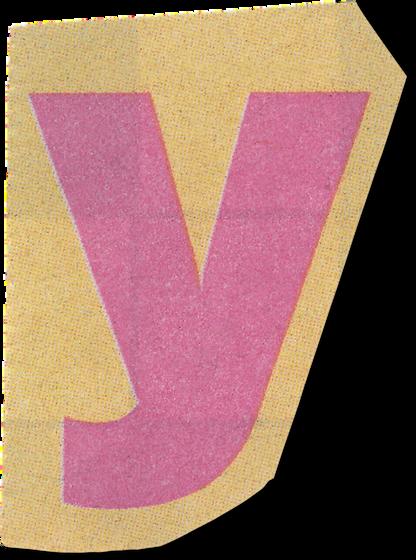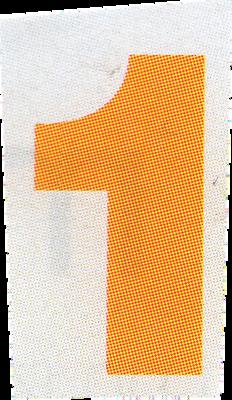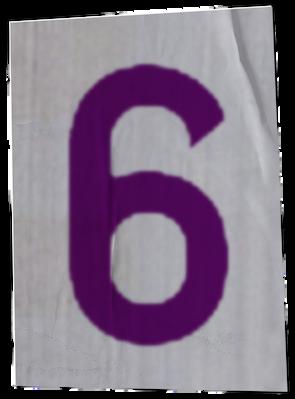4461284756482337867831652712019091456485669234603486104543266482133936072602491412737245870066063155881748815
2092096282925409171536436789259036001133053054882046652138414695194151160943305727036575959195309218611738193
2611793105118548074462379962749567351885752724891227938183011949129833673362440656643086021394946395224737190
7021798609437027705392171762931767523846748184676694051320005681271452635608277857713427577896091736371787214 6844090122495343014654958537105079227968925892354201995611212902196086403441815981362977477130996051870721134 9999998372978049951059731732816096318595024459455346908302642522308253344685035261931188171010003137838752886 5875332083814206171776691473035982534904287554687311595628638823537875937519577818577805321712268066130019278 7661119590921642019893809525720106548586327886593615338182796823030195203530185296899577362259941389124972177 5283479131515574857242454150695950829533116861727855889075098381754637464939319255060400927701671139009848824 0128583616035637076601047101819429555961989467678374494482553797747268471040475346462080466842590694912933136 7702898915210475216205696602405803815019351125338243003558764024749647326391419927260426992279678235478163600 9341721641219924586315030286182974555706749838505494588586926995690927210797509302955321165344987202755960236 4806654991198818347977535663698074265425278625518184175746728909777727938000816470600161452491921732172147723 5014144197356854816136115735255213347574184946843852332390739414333454776241686251898356948556209921922218427 2550254256887671790494601653466804988627232791786085784383827967976681454100953883786360950680064225125205117 3929848960841284886269456042419652850222106611863067442786220391949450471237137869609563643719172874677646575 7396241389086583264599581339047802759009946576407895126946839835259570982582262052248940772671947826848260147 6990902640136394437455305068203496252451749399651431429809190659250937221696461515709858387410597885959772975 4989301617539284681382686838689427741559918559252459539594310499725246808459872736446958486538367362226260991 2460805124388439045124413654976278079771569143599770012961608944169486855584840635342207222582848864815845602 8506016842739452267467678895252138522549954666727823986456596116354886230577456498035593634568174324112515076 0694794510965960940252288797108931456691368672287489405601015033086179286809208747609178249385890097149096759 8526136554978189312978482168299894872265880485756401427047755513237964145152374623436454285844479526586782105 1141354735739523113427166102135969536231442952484937187110145765403590279934403742007310578539062198387447808 4784896833214457138687519435064302184531910484810053706146806749192781911979399520614196634287544406437451237 1819217999839101591956181467514269123974894090718649423196156794520809514655022523160388193014209376213785595 6638937787083039069792077346722182562599661501421503068038447734549202605414665925201497442850732518666002132 4340881907104863317346496514539057962685610055081066587969981635747363840525714591028970641401109712062804390 3975951567715770042033786993600723055876317635942187312514712053292819182618612586732157919841484882916447060 9575270695722091756711672291098169091528017350671274858322287183520935396572512108357915136988209144421006751 0334671103141267111369908658516398315019701651511685171437657618351556508849099898599823873455283316355076479 1853589322618548963213293308985706420467525907091548141654985946163718027098199430992448895757128289059232332 6097299712084433573265489382391193259746366730583604142813883032038249037589852437441702913276561809377344403 0707469211201913020330380197621101100449293215160842444859637669838952286847831235526582131449576857262433441 8930396864262434107732269780280731891544110104468232527162010526522721116603966655730925471105578537634668206 5310989652691862056476931257058635662018558100729360659876486117910453348850346113657686753249441668039626579 7877185560845529654126654085306143444318586769751456614068007002378776591344017127494704205622305389945613140 7112700040785473326993908145466464588079727082668306343285878569830523580893306575740679545716377525420211495 5761581400250126228594130216471550979259230990796547376125517656751357517829666454779174501129961489030463994 7132962107340437518957359614589019389713111790429782856475032031986915140287080859904801094121472213179476477 7262241425485454033215718530614228813758504306332175182979866223717215916077166925474873898665494945011465406 2843366393790039769265672146385306736096571209180763832716641627488880078692560290228472104031721186082041900 0422966171196377921337575114959501566049631862947265473642523081770367515906735023507283540567040386743513622 2247715891504953098444893330963408780769325993978054193414473774418426312986080998886874132604721569516239658 6457302163159819319516735381297416772947867242292465436680098067692823828068996400482435403701416314965897940 9243237896907069779422362508221688957383798623001593776471651228935786015881617557829735233446042815126272037 3431465319777741603199066554187639792933441952154134189948544473456738316249934191318148092777710386387734317 7207545654532207770921201905166096280490926360197598828161332316663652861932668633606273567630354477628035045




Why You Suck at
and How to Improve!
Alex Cox and Rui Feng ‘26to conjugate that one Spanish verb. Maybe you want to cry every time you think about French grammar or Latin noun declensions. Do you ever wonder about the science behind your failure?
There are three main factors that determine your success in language acquisition: genetic, environmental, and developmental. Scientists aren’t sure which genes predispose the brain to easier language acquisition, but a 2012 study suggests that FOXP2, known as the “language gene,” is a good candidate. Those born with mutations of the FOXP2 gene often experience difficulty in language comprehension. So could the opposite be true? Could those with a somehow enhanced FOXP2 gene be more adept at learning languages? It’s certainly possible, but the recipe for a “good” language learner requires so many ingredients that a single gene probably has little effect on language acquisition. Just like genes only account for 20% of what makes a “math person,” genetics may have little to do with your language skills in comparison to environmental and developmental factors.
If you’re exposed to any skill young, while your brain is still developing, you’re likely going to develop an aptitude for it. People who grow up bilingual, for example, show higher aptitudes for learning a third language. But, surprisingly, they are also shown to have better skills in their second language than native speakers of that language! The skills that bilingual children grow up with can help them reach fluency in any language they decide to learn, whether it be English, Japanese, or Esperanto.
Do you struggle in your world language class? Maybe you just can't remember how to write that one Chinese character or how (next page)
Environmental and developmental factors go hand in hand. Most bilingual children learn two languages simultaneously at a young age, when their brains are elastic and form neural pathways with ease. The “critical period” of learning a language, in fact, ends around 18. But don’t worry—it’s still possible to pick up languages as a teenager or adult! Christine Kulke, 10th- and 11th-grade history teacher, started learning Russian in college and is now fluent in the language, as well as 3 others. “It’s harder,” she says, “but not impossible. Do it!”
Unfortunately, 78% of Americans are monolingual, disconnected from the rich, vivid cultures that lie outside our country. How can we change this? Well, STEAM Spotlight has a few tips! Here’s our list of 5 foolproof ways to learn a language, whether you’re mono-, bi-, or even trilingual:
1) Immersion. Immersing yourself in your target language (the language you want to learn) has been proven time and time again to be the best way to learn a new language. The best way to immerse yourself is to visit a country that speaks your target language, but specialized immersion programs can be almost as good.
2) Speaking with native speakers. Whether online or in person, chatting with a native speaker can do wonders for your conversational skills. It’s also a great way to make friends and connect with people from different backgrounds! (next page)
3) Media. Who said language learning is all memorizing grammar sheets and conjugations? Spending 5 hours watching Grey’s Anatomy can actually help you reach fluency…if you watch it in your target language! Even better is watching shows, reading books, and listening to music originally made in your target language because they allow you a glimpse of the culture as well.
4) Consistency. As the brain develops, it reinforces the neural connections that we use frequently. So practice your target language as much as you can, whether it be on the bus, after lacrosse practice, or during class (well…maybe not during class). In the immortal words of Duolingo, even just 5 minutes a day can make a difference.
5) Perseverance. Learning a language isn’t easy. But the reward of being able to communicate with a new culture’s worth of people is unmatched. So no matter how hard it gets, don’t give up!
Learning a new language is a wonderful way to expand your mind, connect with new people, and make yourself attractive to employers. And it’s really, really fun!
We encourage you to take your language learning outside the classroom and build a skill that will benefit you for the rest of your life. And with that, we say goodbye, adios, 再⻅, au revoir, ciao, vale…you get the picture.

is in the pudding
Malia Humphries-Do ‘26
Points A, B, and C are situated in the plane such that ∠ABC = 90◦ . Let D be an arbitrary point on AB, and let E be the foot of the perpendicular from D to AC. Prove that ∠DBE = ∠DCE.
Email your answers to malia.humphriesdo.2026@holton-arms.edu for a prize! We’ll publish the answer in next month’s issue.
Potential diagram (there are other ways to visualize it!):
What is
Aleca Aukhert and Grace Curley ‘25Seasonal affective disorder, also known as SAD, is a form of depression that usually appears in the fall and winter months. Although there is not a certain known cause, scientists believe it stems from the shorter days when the sun begins to set around 5 in the evening. There are two main hypotheses as to why shorter days can cause sadness and depression. The first is the trigger of a chemical in the brain. The second is a rise of melatonin in the body. Melatonin is produced in the body when it is dark out so, because there is less light in the days, more melatonin is produced in the body. Some symptoms people experience are increased drowsiness, anxiety, irritation, fatigue, headaches, weight gain, and much more. Treatments for SAD may include spending more time outside, using an artificial light for sunlight, therapy, or even antidepressants (Hopkins Medicine).
Seasonal depression affects 5% of American adults for over 40% of the calendar year (APA). Due to the commonness of this condition, many people have developed nonmedical ways to boost their serotonin levels. The first and arguably most “important” tip is to reach out for help; Help does not have to come directly from a medical professional, such as a therapist or psychiatrist, but can come from friends and family. Self-isolation often comes hand and hand with depressive symptoms. Talking to friends and family frequently about not only your struggles but also your daily life has proved most effective in patients affected by SAD. Another tip is to change up one’s routine by trying a new hobby or activity. A way to alter up routine may also come in the form of your diet through ensuring you are getting enough nutrients and water throughout the day. Last but certainly not least is exercise. Exercise helps to reduce stress and anxiety. Making sure you are staying active is key to avoiding SAD (NHS Inform). Living with SAD can be challenging, but by understanding the illness and taking the appropriate steps, you can limit or even eliminate SAD altogether.

Lunar Landing
Lucia Noto ‘25

In a historic moment that echoes the glory of the Apollo era, the United States has once again set foot on the moon with the successful landing of the spacecraft Odysseus. This marks the first time since 1972 that an American-made spacecraft has graced the lunar surface, signifying a remarkable advancement in space exploration.
Following this accomplishment, Mrs. King promptly informed Upper School students in an email. Reflecting on the event, she noted, “The excitement level during the first lunar landing was completely different, the first time was so special. Everyone watched on their black and white screens. This time most people didn't even know that we were landing on the moon again. But it is very exciting! After so many years we are landing on the moon again.”
Odysseus, a robotic lander roughly the size of a large refrigerator crafted by the company Intuitive Machines, based in Houston, made its descent into the moon's south polar region at 6:23 PM EST on Thursday, February 22nd. It was so quiet you could hear a pin drop in the mission control center as flight controllers anxiously awaited confirmation of a successful landing. After a tense pause, Tim Crain, the chief technology officer of Intuitive Machines, announced, “Houston, Odysseus has found its new home!” Ms. King comments, “It is wonderful that we are landing on the moon again, a real feat of technology.”
(next page)

While the celebration was tempered by uncertainties about the spacecraft's communication abilities, subsequent reports from Intuitive Machines indicated that Odysseus was upright and transmitting data. This mission, part of NASA’s Commercial Lunar Payload Services (CLPS) program, aims to revolutionize space transportation within our solar system by paving the way for a new era of economical exploration. Dr. King believes that “It is useful to use both public and private funding for exploration.”
This lunar journey, though more modest in scale compared to the Apollo Space missions, signifies a strategic shift in NASA's approach to spark a revolutionary era where “transportation around the solar system…is economical as far as spaceflight is concerned” (Chang). Carissa Christensen, the chief executive of BryceTech, comments,“I think it is a smart thing that NASA is trying to do, which is to essentially create a competitive ecosystem of providers to meet its needs.” Also, by having multiple providers, Dr. King adds, "NASA is not beholden to any one provider."
The Commercial Lunar Payload Services Program (CLPS) equipped Odysseus with six instruments to help with reconnaissance of the moon including a radio receiver and a camera. In preparation for the return of U.S. astronauts to the moon, NASA is using Odysseus to research the moon’s surface. Dr. King thinks that the Odysseus landing "is important for space exploration and exploring the moon surface helps us to establish a stable base on the moon."

Only government space programs such as the Soviet Union, China, India and Japan have successfully landed robotic landers on the lunar surface. Commercial attempts by Japanese, United States and Israeli entities have been unsuccessful. Even though commercial missions in space have not gone according to plan, Dr. King firmly believes that "all attempts teach us something so they are not failures. Each attempt is a way to find a better solution."
While Odysseus encountered difficulties, its ultimate success ignites the human spirit and rekindles hope for economical journeys into space. With great expectation, we await the data and images of the lunar surface and the secrets it will reveal. The Odysseus expedition highlights human ingenuity and the possibilities of deeper and frequent space travel in our lifetimes. As Dr. King states, "Space travel is important for humankind in terms of knowledge and technology." Would you like to be the next astronaut on the moon?
Further Reading:
Highlights From the Successful Lunar Landing of the Spacecraft Odysseus | The New York Times
Intuitive Machines





















 Carter Thompson ‘26
Carter Thompson ‘26

